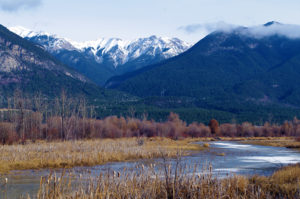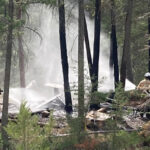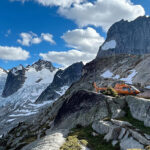Home »

Gaming grants support wetlands
When Margaret Hartley signed up for a Wetlandkeepers workshop with the BC Wildlife Federation in 2012, she wasn’t fully aware of the variety of life flourishing in the wetlands near her home in New Denver.

As a member of the Slocan Lake Stewardship Society, Hartley was aware that the lake was fed by those wetlands and streams. The workshop, which featured plant specialists, biologists and entomologists, opened her eyes to the wetland’s biodiversity, sparking a multi-year journey to protect and restore the wetlands within the Slocan Valley Watershed.
“Our wetlands are marvellous little clusters of biodiversity. Hearing stats about how many wetlands have been lost due to development and being on a stewardship group really generated a lot of enthusiasm to protect these areas,” said Hartley, who helped found the Slocan Wetland Assessment and Monitoring Project (SWAMP), which has mapped several wetlands in the valley. “It makes me feel very anxious that wetlands are areas that don’t have a lot of protection unless you have some kind of rare plant or animal living there.”
Hartley is among more than 3,000 workshop participants and stewards who have participated in the BC Wildlife Federation’s Wetlands Education Program since it began in 1996. Through collaborations with non-government organizations, local community groups, naturalist clubs and First Nations, the program supports and organizes teams to restore, enhance and conserve wetlands around the province. It also offers courses educating the public about wetland mapping, plant and animal identification, soil sampling, wetland classification and other stewardship skills.
According to Neil Fletcher, program manager, about a third of species at risk are associated with wetlands for a portion of their life. But wetlands only make up five to six per cent of B.C.’s land base. Many are being lost in the southern part of the province because of development.
“We often thought of wetlands as being these wastelands, so there’s a huge need to educate the public that, ‘No, they are not wastelands.’ They have a tremendous amount of value, not just for wildlife, but also for society, from water filtration to buffering our communities from extreme weather events through flood control,” said Fletcher, noting about 47% of wetlands in the Columbia Basin have been lost. “Our underlying goal is to reach as many British Columbians as possible and make them feel proud about the natural environment. We want to make people inspired and care about the outdoors and nature so they become stewards.”

So far, teams with the Wetlands Education Program have directly completed 39 projects and continue to take on more. One team is working on a multi-year project with the Lower Kootenay Band to reconnect wetlands to flood plains in a large area altered by dykes and ditches that were built in the 1970s and ’80s. More than 1,000 waterfowl have already been seen using some of the habitat restored last year.
The BC Wildlife Federation recently received $123,500 in community gaming grants from the province to support four programs, including the Wetlands Education Program, along with several youth programs aimed at getting kids off screens and into the great outdoors.
Every year, commercial gambling generates revenue that the B.C. government invests in key services. A portion of the revenue is allocated via the $140-million Community Gaming Grants Program, which helps fund over 5,000 not-for-profit organizations throughout the province.
For 2019-20, approximately $4.6 million from the program was allotted to 135 organizations in the environment sector.
Lead image: The Slocan River. Ian Cobb/e-KNOW photo
e-KNOW







